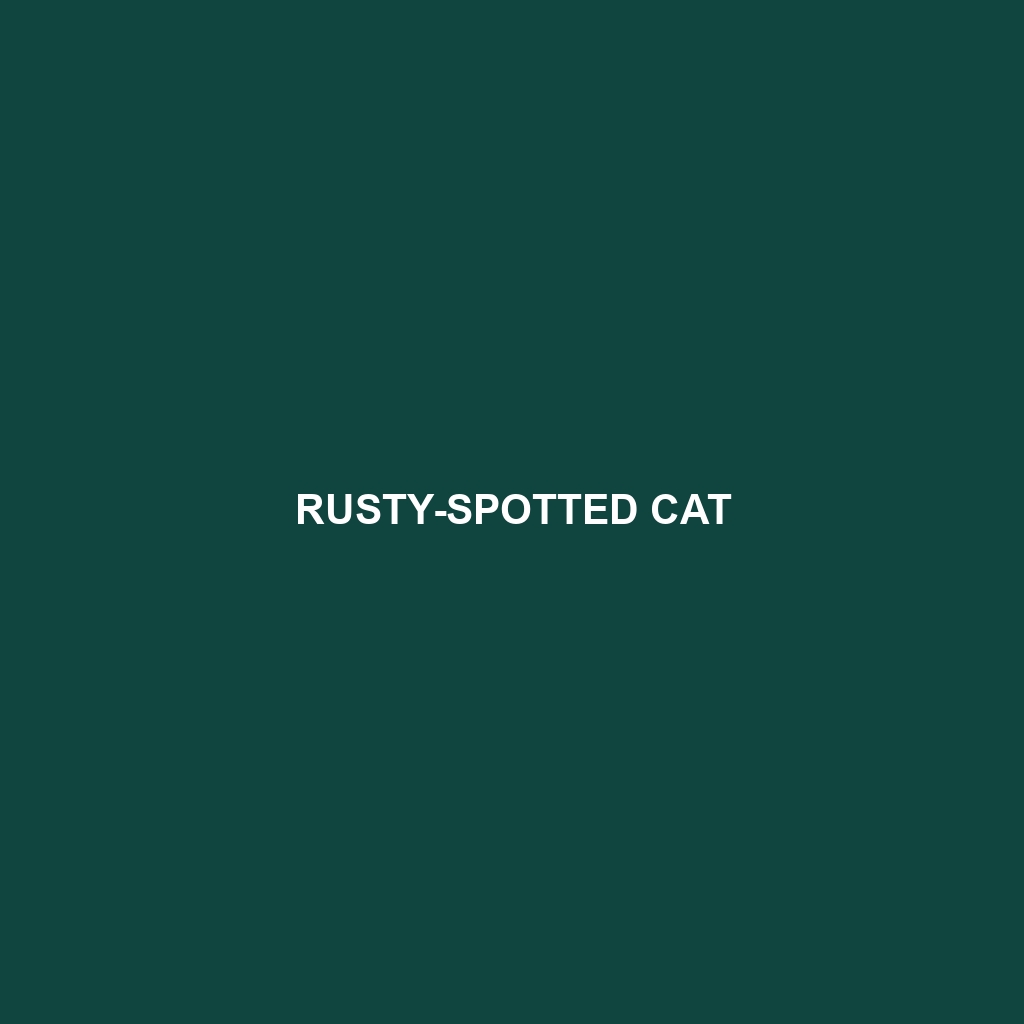Rusty-spotted Cat (Prionailurus rubiginosus)
Common Name: Rusty-spotted Cat
Scientific Name: Prionailurus rubiginosus
Habitat
The Rusty-spotted Cat is primarily found in the dry deciduous forests, scrublands, and grasslands of India and Sri Lanka. This small feline typically inhabits areas with dense vegetation, which provides cover and hunting grounds. Their presence is most concentrated in the Western Ghats and parts of Rajasthan, where they prefer to dwell in rocky terrains and thickets.
Physical Characteristics
This petite cat measures around 35-48 centimeters in body length with a tail length of approximately 15-25 centimeters. Their distinctive coat is primarily rusty brown with darker spots, helping them blend seamlessly into their surroundings. A notable feature is their large, rounded eyes that enhance their night vision, making them adept nocturnal hunters.
Behavior
The Rusty-spotted Cat is primarily a solitary creature, often engaging in marking territories with their scent. They are known for their agile climbing abilities and often hunt arboreal prey. Most active during twilight and nighttime, they are elusive and can be challenging to spot in the wild. Their typical vocalizations include soft calls, which they use for communication.
Diet
As carnivorous predators, Rusty-spotted Cats primarily feed on small mammals such as rodents, birds, and lizards. They have also been observed to hunt insects and large arthropods, making their diet quite diverse. Their hunting technique involves stealth and patience, allowing them to pounce effectively on unsuspecting prey.
Reproduction
The breeding season for the Rusty-spotted Cat usually occurs between January and March. Female cats give birth to a litter of approximately 2-4 kittens after a gestation period of about 60-70 days. Mothers are known to be highly protective of their young, often moving them to different locations to ensure safety from predators.
Conservation Status
The Rusty-spotted Cat is currently listed as Endangered by the International Union for Conservation of Nature (IUCN). The primary threats to their survival include habitat loss due to deforestation, agriculture expansion, and poaching. Conservation efforts are crucial to protect this elusive species and its natural habitat.
Interesting Facts
Despite its small size, the Rusty-spotted Cat is considered one of the smallest cat species in the world. Additionally, they have been known to exhibit playful behaviors, such as climbing trees and stalking through brush, which can be reminiscent of domestic cat antics.
Role in Ecosystem
The Rusty-spotted Cat plays a vital role in its ecosystem as a predator, helping to control populations of rodents and insects. Their presence impacts the balance of the food web, showcasing their importance in maintaining ecological stability. Furthermore, their hunting behaviors provide insights into the health of their environment.
